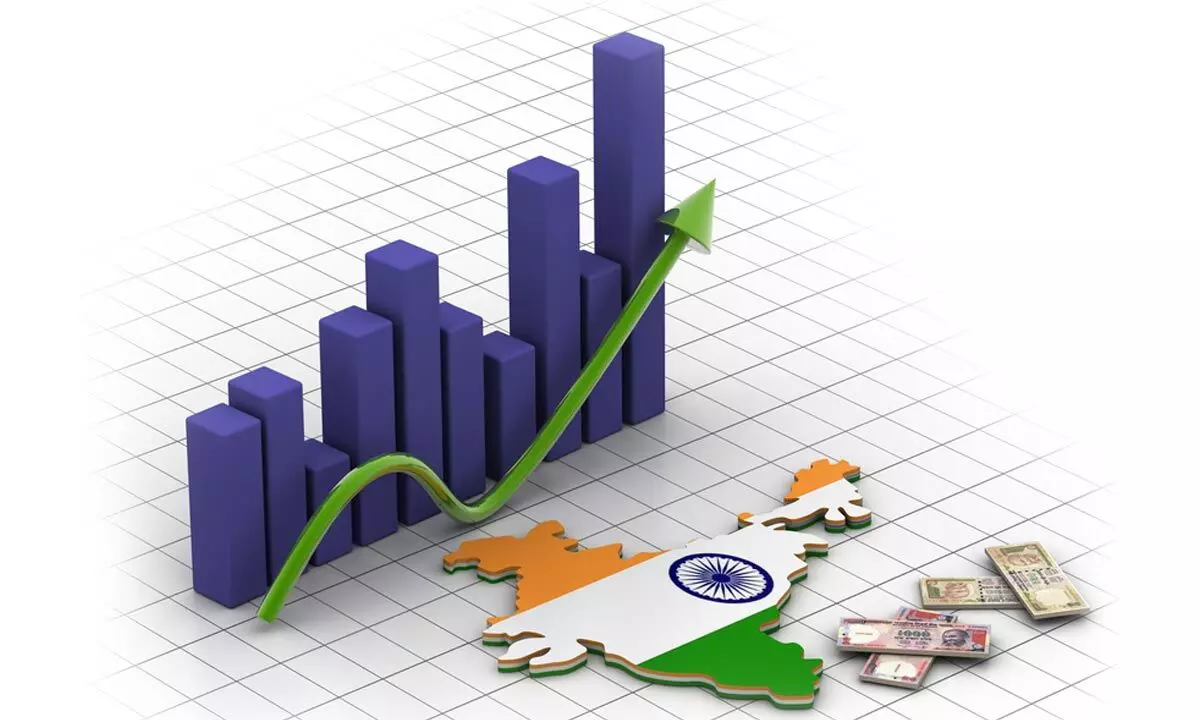Can India lead G20 in economic growth over next few years?
India, currently the sixth largest economy in the world, is all set to lead the G20 over next few years and achieve $5 trillion economy subject to favourable economic conditions.
image for illustrative purpose

India, currently the sixth largest economy in the world, is all set to lead the G20 over next few years and achieve $5 trillion economy subject to favourable economic conditions.
Moody's Investors Service on Thursday slashed India's economic growth projection to 8.8 per cent for the current calendar year from 9.1 per cent earlier, citing high inflation. Still, this projection by the global credit rating agency is higher than the projections made by the domestic analysts.
For example, FY22 GDP growth as projected by the SBI economists is at 8.2-8.5 per cent. Though a clear picture will be out when the NSO declares the real GDP number for the quarter gone by on May 31.
However, it all comes with a rider. Barclays has forecast India's economic growth slowed to 3.7 per cent YoY in Q4FY22. The country's real GDP grew 8.3 per cent in CY21, restoring India's status as the fastest-growing economy among the G20 (the group of the world's 20 largest economies). China's real GDP grew 8.1 per cent in 2021, the next-fastest growth in the G20.
At market exchange rates, India's nominal GDP grew to $3.078 trillion in CY21, keeping it in 6th place among the world's largest economies (marginally behind the fifth largest economy, the UK, with a nominal GDP of $3.108 trillion). However, going forward, given India's demographics and the impact of the reforms of the past couple of years, ICICI Securities expects India to lead the G20 in economic growth over the next few years. Still, as the economy reopened post the Omicron restrictions, the activity revival is becoming more broad based, which analysts think will lift GDP above pre-pandemic levels.
In terms of the sectoral breakdown, they expect weakness in the rural economy to have persisted in Q42022, as workers moving from rural areas to urban centres for employment, and higher input costs weighed on both farming and non-farming activity.
Now, there are 'ifs' and 'buts' attached to the country's economic growth before she was able to realise the dream of becoming a $5 trillion economy. First, the agricultural growth has slowed down in the recent past. Agriculture growth is likely to slip to 2.5 per cent in Q42022, from 2.6 per cent in the preceding quarter.
Secondly, the growth has to come from the export and the jump in tax revenue collection in days to come.
Weakness in auto production will have limited growth in the manufacturing sector to 1.0 per cent YoY in Q4 FY22. While export trade volumes were high, higher commodity prices increased India's import bill, which exerted a drag on overall economic activity. Fuel sales were weak in January. Weakness in auto production is likely to have limited growth in the manufacturing sector to 1.0 per cent YoY in the period under review.
While export trade volumes were high, higher commodity prices increased India's import bill, which exerted a drag on overall economic activity.


